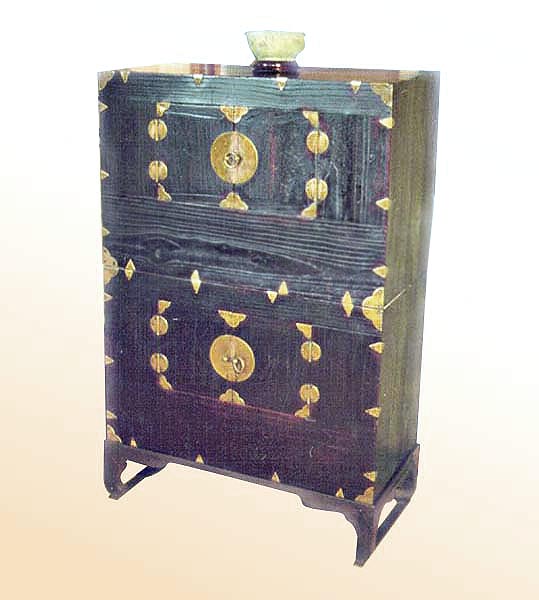| Black
paulownia Nong Paulownia wood; yellow brass fittings; pine blacking and oil finish Mid to late nineteenth century, Ch'ungch'ong Province.
|
 |
| Black
paulownia Nong Paulownia wood; yellow brass fittings; pine blacking and oil finish Mid to late nineteenth century, Ch'ungch'ong Province.
|
 |
|
|
| Click on the view you would like to see. | 
Doors |
|
|
1. Black paulownia nong |
2. Linden bandaji |
3. Zelkova burl jang |
4. Paulownia ham |
5. Red paulownia nong |
6. Wild walnut nong |
7. Red pine ham |
8. Cherry bandaji |
9. Zelkova bandaji |
10. Persimmon nong |
11. Zelkova lattice jang |
12. Pine framed bandaji |
13. Red pine bandaji |
More |